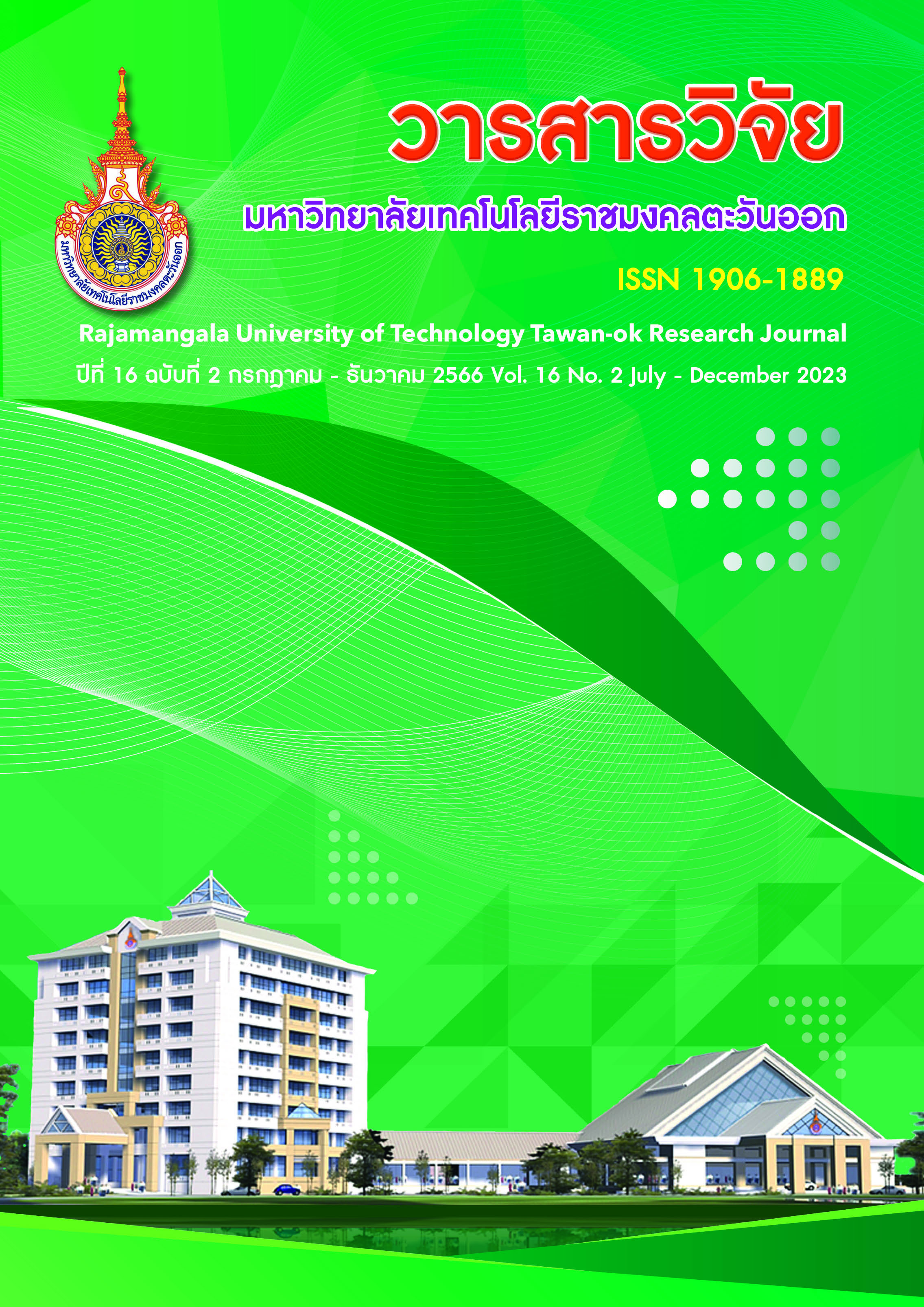Development of properties and comparison of efficiency for pavement blocks from cement soil.
Main Article Content
Abstract
This research studied the properties of laterite soil which is a type of sandy soil, they are red or reddish brown and are common in every region of the country. Which will bring laterite soil in general areas in Pathum Thani Province and when mixed with cement and water to be homogeneous according to the specified ratio and use industry standards as a reference to develop the physical and mechanical properties of walkway blocks which are made from mixing the cement soil to be similar to the current cement walkway blocks. This research therefore focuses on the preparation of walkway blocks from cement soil according to the industrial standard TIS 827-2531 and conducted a study to compare with different mixing ratios in formulas of 1:7, 1:8 and 1:9. The main variable is laterite land, the type of soil that has been sifted and the type of soil that has not been sifted. The ratio of water will be 50 percent from the amount of laterite soil. In order to develop the properties of cement walkway blocks to be efficient in order to create options for selecting appropriate uses. in order to test the physical and mechanical properties. The size of the specimen in the test was 5x5x5 centimeters to compare with the industry standard for interlocking concrete blocks for general flooring (TIS. 827-2531), From testing the compressive strength of walkway blocks made from sifted cement soil at mix ratios of 1:7:3, 1:7:3.5, 1:7:4, 1:8:3.5, 1:8:4, 1:8:4.5, 1:9:4, 1:9:4.5, 1: 9:5, all ratios of sifted soil had a compressive strength lower than the standard TIS 827-2531 of interlocking concrete blocks for flooring that is specified to be not less than 40 kilograms per square centimeter. As for the type of soil that does not crumble, it has a compressive strength value lower than the TIS 827-2531 standard at mixing ratios of 1:9:4.5, 1:9:5. Therefore, the mixing ratio that has a compressive strength value through The TIS 827-2531 standard is based on the type of non-suspended soil, the mix ratio is 1:7:3, 1:7:3.5, 1:7:4, 1:8:3.5, 1:8:4, 1: 8:4.5 and 1:9:4 and test the water absorption of the walkway blocks from cement soil at the mixture ratios of non-suspended soil types 1:7:3, 1:7:3.5, 1:7:4, 1:8 :3.5, 1:8:4, 1:8:4.5, 1:9:4, 1:9:4.5 and 1:9:5 all ratios have values not exceeding the TIS 827-2531 standard criteria that have values between 10-25%. Therefore, the water absorption value of walkway blocks from cement soil can pass the TIS 827-2531 standard criteria. Therefore, a good ratio for actual molding is 1:7:3, 1:7:4, 1:7:3.5, 1:8:3.5, 1:8:4.5, 1:8:4 and 1:9:4 respectively, from soil that has not been
Article Details

This work is licensed under a Creative Commons Attribution-NonCommercial-NoDerivatives 4.0 International License.
References
Department of Mineral Resources. (2016). Soil. Retrieved 15 Mar 2022, from http://www.dmr.go.th/main.php?filename=soil. (in Thai)
Faculty of Engineering, University of Phayao. (2016). Determination of density and water absorption of bricks. Retrieved 20 Mar 2022, from http://engineeringmaterialsproject.blogspot.com/.(in Thai)
Kamdee S., Thongmunee S. & Jitsangiam P. (2020). Effects of Fine Content and Cement Content on Unconfined Compressive Strength of Lateritic Soil-Cement. Proceeding of the National Convention on Civil Engineering (pp. 1-6). The Engineering Institute of Thailand Under H.M.The King’s Patronage.
Ministry of Industry. (1989). Industrial product standards for interlocking concrete blocks for flooring, TIS 827-2531. Retrieved 4 Mar 2022, from https://technologyblockprasan.com/wp-content/uploads/2019. (in Thai)
Onestockhome. (2019). Cement. Retrieved 9 Feb 2022, from https://www.onestockhome.com/th/homemap_contents/81709979/types-of-portland-cement-in-Thailand. (in Thai)
Ongsupankul S., Kaewsaeng W. & Dumrongsil S. (2016). Mechanical Behavior of Cement Stabilized Rammed Earth (CSRE) Wall Under Axial load for earth building. Proceeding of the 1st National Conference Rajamangala University of Technology Rattanakosin: B-inno 2016 (pp. 11-20). Rajamangala University of Technology Rattanakosin. (in Thai)
Pahusuwanno S., Inkliang K. & Hanhongart B. (2017). A Study of Para Soil Cement Road Construction. Proceeding of the 11th THAICID NATIONAL SYMPOSIUM (pp. 265-276). Bureau of Project Management. (in Thai)
Worasuntarosoth P. & Worasuntarosoth W. (2012). Construction Materials. Retrieved 18 Feb 2022, from https://www.se-ed.com/product. (in Thai)


